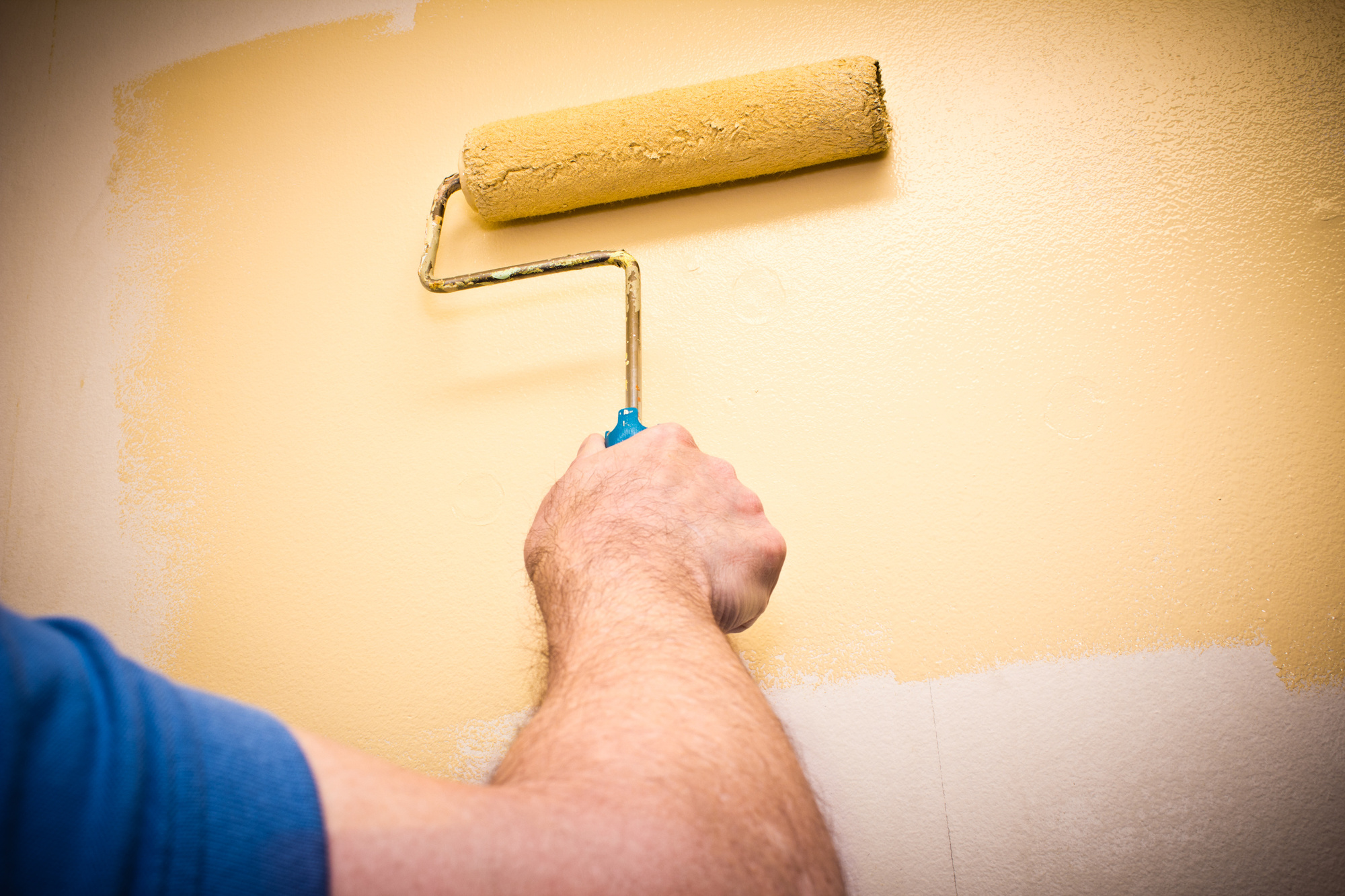
Color Psychology: How Home Colors Affect Your Mood
In every hue of the color spectrum, there lies an emotional response waiting to be evoked. Color has been an essential element of human history, serving not just an aesthetic purpose, but also playing a pivotal role in how we understand, categorize, and feel about the world around us. The walls of our homes, where we spend so much of our lives, are no exception to the profound impact of color.
The Science Behind Paint Color and Mood
Before diving into specific shades, it’s essential to understand the science of why colors have the power to influence our emotions. Color perception begins when the cones in our eyes are stimulated by a particular wavelength of light. This signal is then processed by the brain, evoking various physiological and emotional reactions.
Several studies have supported the idea that colors can profoundly affect our moods, feelings, and even behaviors. For example, research has shown that people often feel colder in blue rooms, even if the actual temperature is the same as in rooms of other colors. Another study revealed that weightlifters tend to perform better in blue gyms, indicating that certain shades might enhance physical performance.
A Deeper Look Into the Studies of Color
Over the years, numerous studies have explored the relationship between color and human psychology. Let’s dive into a few key studies and their findings:
- The Impact of Color on Learning and Mood
- Study by Andrew J. Elliot and Markus A. Maier, published in Psychological Science
- Findings: This study demonstrated that red color induces avoidance motivation in achievement contexts but can be associated with heightened attention to detail. On the other hand, blue induces approach motivation but might enhance creative performance.
- Color and Psychological Functioning: A Review of Theoretical and Empirical Work
- Study by Andrew J. Elliot and Markus A. Maier, published in Frontiers in Psychology
- Findings: This study summarizes and organizes the existing literature on color and psychological functioning, emphasizing the need to account for both saturation (intensity) and brightness. It elaborates on how colors can lead to various affective, cognitive, and behavioral outcomes.
- Room Color and Aggression in an Experimental Living Environment
- Study by James A. Green of the University of Georgia, published in Perceptual and Motor Skills
- Findings: This study examined the effects of room color on aggression and activity level. Participants in a red room displayed more aggressive behavior and had higher activity levels than those in a blue or green room.
- Effects of Office Interior Color on Workers’ Mood and Productivity
- Study by Nancy Kwallek and Carol M. Lewis, published in Perceptual and Motor Skills
- Findings: This study explored how office color, in particular, impacts worker productivity. Red office interiors were found to be more problematic for workers’ well-being than blue or white environments.
- Influence of Color on Perception of Sweetness: An Empirical Study
- Study by R. B. Piqueras-Fiszman and C. Spence, published in Food Quality and Preference
- Findings: The study discovered that color can even impact our taste perception. Specifically, participants rated hot chocolate as sweeter and more flavorful when served in a cream-colored cup as compared to red or black cups.
- Effect of Colors: Blue Boosts Cognitive Performance and Red Enhances Physical Performance
- Study by Serge Caparos and Jonathan Schooler, published in Emotion
- Findings: Blue and red have been traditionally associated with being opposed in their psychological influences. This study confirmed that blue improves cognitive performance, whereas red enhances physical outcomes.
- Effects of Classroom Color on Mood and Performance
- Study by Stephanie Lichtenfeld et al., published in Semantics Scholar
- Findings: The study discovered that green coloration has beneficial effects on mood and cognitive performance. It suggests that careful selection of wall color in educational settings can influence the mood and performance of both students and teachers.

These studies can provide a foundation for understanding how various colors impact our emotions, cognition, and behavior. When choosing colors for any environment, especially living spaces, it’s crucial to consider the broader psychological effects these hues might have on individuals and their interactions. Below we will take a look at some common hue’s and the feelings associated with them.
Warm Colors
Red: Often associated with passion, love, and energy, red is a bold and powerful color that can invigorate a room’s atmosphere. It’s known to raise a room’s energy level and stimulate conversation, making it an excellent choice for living rooms and dining areas. However, because of its intensity, it might not be the best choice for bedrooms where relaxation is a priority.
Orange: This vibrant color is often linked to enthusiasm, excitement, and warmth. It’s invigorating and playful, perfect for spaces where you want to inspire activity and socialization. Think playrooms, exercise rooms, or even a lively kitchen.
Yellow: Symbolizing happiness, joy, and sunshine, yellow is an uplifting color. When used in softer shades, it can create a cozy and welcoming environment. However, it’s worth noting that brighter shades of yellow, especially when overused, can lead to feelings of frustration and anger in some individuals.
Cool Colors
Blue: Blue is often associated with feelings of calmness, serenity, and stability. Lighter shades can be cooling and calming, making them perfect for bedrooms or bathrooms. Darker shades can instill feelings of sadness or introspection, so it’s essential to balance them with complementary colors or decor.
Green: Often linked to nature, green strikes a balance between the warmth of yellow and the calm of blue. It’s restful for the eyes and can work in almost any room. From the kitchen to the bedroom, green can soothe and comfort or invigorate and refresh, depending on its shade.
Purple: Historically, purple was a color of royalty and luxury. In its lighter shades, like lavender, it brings the calm of blue and the warmth of red, making it perfect for relaxation spaces. Richer shades exude opulence and drama, ideal for stimulating creativity.
Neutral Colors
White: Associated with purity and cleanliness, white can offer a sense of peace and simplicity. It provides a blank canvas, making spaces feel larger and more open. However, an all-white room can feel sterile, so it’s often best paired with other colors.
Black: While black can evoke feelings of sophistication and elegance, it can also make spaces feel smaller. It’s best used sparingly and combined with lighter colors to maintain a balanced look.
Brown: Grounded and reliable, brown brings warmth to spaces. It’s often associated with earthy tones and can be used to create a cozy and inviting atmosphere, especially in living spaces.

Finding Balance
While understanding the psychology of color is essential, it’s equally crucial to remember that personal experiences and cultural influences also play a significant role in how we perceive color. A shade that feels calming to one person might evoke entirely different feelings in another. Thus, when choosing colors for your home, consider your personal preferences, experiences, and the overall vibe you wish to create.
Additionally, balancing colors is key. A red room can feel overwhelming and intense, but when paired with neutral or cooler colors, it can create a harmonious space.
The Power of Personalization
Ultimately, the most crucial factor in choosing colors for your home is ensuring that they resonate with you personally. Your home should be a reflection of your unique style, experiences, and feelings. Whether you opt for trendy shades or timeless classics, make sure they align with your vision for your space.
Personalization of Color in Your Home
The colors we choose to decorate our homes with are deeply personal. They are often reflections of our personalities, our moods, or simply our design aspirations. But beyond this, color in home decor can also serve to rejuvenate, invigorate, soothe, or inspire depending on its hue and intensity. Here’s how you can personalize and infuse your space with colors that resonate with you:
1. Reflect On Your Personality
Before picking up that paintbrush, think about the vibes you’d like a particular room to exude. Are you lively and energetic? Perhaps brighter shades might suit you. Do you desire a calming and serene bedroom? Pastel shades or cooler tones might be your best bet. Your home should be an extension of yourself; let it tell your story.
2. Draw Inspiration from Memories or Travels
Often, the places we’ve visited or memories we cherish can be great starting points. Loved the serene blues and whites of the Greek islands? Or the vibrant colors of a market in Morocco? Bring those memories alive in your home. A cherished childhood memory associated with a particular hue can bring a sense of nostalgia to a space.
3. Use Artwork as a Starting Point
If you have a favorite piece of art, draw inspiration from its color palette. Not only will this provide a cohesive look, but it will also accentuate and draw attention to your beloved artwork.
4. Don’t Forget About Mood
Remember, colors influence emotions. If you’re looking to create a relaxing retreat, you might consider soft blues, lavenders, or earthy greens. For a more energetic space, consider oranges, bright yellows, or bold reds.
5. Test Before You Commit
Always test a small patch on your wall before committing to a color. Observe it at different times of the day as natural light can significantly change how a color looks. This will also give you an idea of how the color interacts with your furniture and other elements of the room.
6. Consider Room Functionality
Dining areas might benefit from warmer colors which are known to stimulate appetite, such as reds or oranges. In contrast, bedrooms or reading nooks might be more suited for calming blues or neutral shades.
7. Integrate Accent Walls
If you’re hesitant about painting an entire room in a bold hue, consider just an accent wall. This provides a pop of color without overwhelming the space. Plus, it’s a great way to highlight architectural features.
8. Think Beyond Walls
Remember, personalizing with color isn’t limited to walls. Consider colored furniture, vibrant throw pillows, or even colored cabinetry in kitchens or bathrooms. These can all serve to introduce color in a more subtle, layered manner.
9. Consult Color Wheel Fundamentals
When in doubt, turn to the color wheel. Complementary colors (those opposite each other on the wheel) can provide high contrast and a vibrant look, while analogous colors (those adjacent to each other) offer a more harmonious feel.
10. Evolve and Adapt
Lastly, remember that your relationship with color can change over time. As you evolve, so might your color preferences. The beauty of paint is its impermanence – you can always repaint if you want a fresh look or mood.

Your home is your sanctuary, and color plays a pivotal role in making it feel truly your own. By infusing your personality and cherished memories into your color choices and being mindful of the ambiance you want to create, you’ll design a space that not only looks good but also feels right. The world of color offers endless possibilities; dive in and make your home a reflection of your unique self.
Trending Color Palettes for Each Room of the House
The landscape of interior design is ever-evolving, with color trends shifting as the years progress. Here’s a breakdown of some of the current trending color palettes for various rooms in the house:
Living Room: Earthy Neutrals and Organic Hues
- Whispered Pales: Soft shades of beige, taupe, and sand create a calming environment that’s both sophisticated and cozy.
- Forest Greens: Deep shades of green, reminiscent of nature, lend an organic touch that’s both timeless and modern.
Kitchen: Bright and Welcoming
- Classic Blues and Whites: This palette offers a fresh, crisp look. Pair with gold or brass fixtures for a hint of luxury.
- Warm Terracottas: Earthy oranges and reds lend a rustic and warm feel, perfect for a gathering space like the kitchen.
Dining Room: Bold and Appetizing
- Merlot Reds: A rich, deep red can stimulate appetite and conversation, making it perfect for a dining setting.
- Golden Yellows: Bright, sun-kissed yellows can uplift a dining space, creating a cheerful ambiance.
Bedroom: Calm and Tranquil
- Lavender and Lilac: These purples are soft and romantic, promoting relaxation and sleep.
- Cool Greys: A neutral palette of varied greys is versatile and promotes serenity, especially when paired with soft linens.
Bathroom: Clean and Refreshing
- Minty Greens: Fresh and cool, this shade gives bathrooms a spa-like feel.
- Marine Blues: Evoking the serenity of the sea, marine and navy shades are timeless and elegant.
Home Office: Productive and Inspiring
- Teal and Turquoise: These vibrant hues inspire creativity and focus, great for getting down to business.
- Soft Rose: A muted pink can be surprisingly neutral, promoting calm concentration.
Kid’s Room: Fun and Energizing
- Pastel Rainbows: Soft tones of multiple colors offer a whimsical touch that isn’t too overpowering.
- Bright Oranges and Reds: Energetic and lively, these shades can stimulate creativity and play.
Entryway/Foyer: Welcoming and Memorable
- Charcoal and Black: Bold and dramatic, these tones create a lasting impression for guests.
- Earthy Browns and Olives: A grounded palette that offers a warm welcome.
While trends offer a great starting point, it’s essential to remember that the best color palette for your home is one that resonates with you personally. Let these trends inspire you, but don’t be afraid to mix and match or go entirely off the trend path if something else speaks to you. Your home is a canvas, ready for your unique touch. Whether you go with the trends or forge your own path, your choices will bring your living spaces to life.

The Influence of Exterior Colors
While the interior of your home sets the mood for your private life, the exterior is a public statement of your style and preferences. It’s the first impression your home makes, and its influence can extend to the entire neighborhood. Let’s explore some trending color palettes for home exteriors:
Modern Farmhouse: Crisp Whites and Accents
- Clean Whites: A dominant white exterior gives a fresh and timeless feel, especially popular in modern farmhouse designs.
- Bold Black Accents: Black window frames, doors, or shutters can offer a stark contrast, adding sophistication.
Coastal Elegance: Cool Blues and Grays
- Soft Blues: Reflective of the sea, light blue hues convey relaxation and a laid-back vibe.
- Pebble Grays: This neutral, reminiscent of beach stones, complements the blue and evokes tranquility.
Desert Modern: Warm Earth Tones
- Terracotta Reds and Oranges: These warm shades mirror the desert landscape and stand out beautifully against a clear blue sky.
- Sandy Beiges and Browns: Neutral yet warm, they blend seamlessly into the natural surroundings.
Traditional: Rich Greens and Neutrals
- Pine or Forest Greens: Deep green hues are classic and harmonize with natural surroundings, particularly in wooded areas.
- Creams and Tans: These neutrals balance out the deep greens and provide a timeless appearance.
Importance of Complementary Landscaping
Landscaping, too, plays a vital role in boosting the appeal of your home exterior. When selecting plants, trees, and flowers, consider how they might complement or contrast with your home’s paint color. For instance, homes with a cooler palette might benefit from plants with silver or blue-toned leaves, while a warmer-colored home might pop with vibrant reds and oranges in the garden.

Seasonal Touches and Decorations
Lastly, while your paint might remain the same, seasonal decorations can offer a dynamic element to your home exterior. From festive winter lights to colorful spring blooms in planters, or autumn wreaths to summer lanterns, there are myriad ways to keep your home looking fresh and in-tune with the changing seasons.
Trends might come and go, but the choice of colors for your home, both inside and out, should resonate with your personal style and the message you want to convey. It’s a blend of personal preference, cultural nuances, and the ever-evolving design landscape. Whatever palette you choose, make it a reflection of you.
Color has a transformative power that goes beyond aesthetics. It can influence our moods, behaviors, and overall well-being. By understanding the psychology behind colors and thoughtfully integrating them into our homes, we can create spaces that not only look beautiful but also enhance our quality of life. If you’re ever in doubt about a color choice, or if you want a professional’s touch to ensure your home’s palette is both stylish and mood-enhancing, know that expert help is always at hand.
Color has the incredible power to transform spaces, set moods, and express one’s identity. If your journey through the captivating world of colors has inspired you to reimagine your home’s palette, remember: paint is where ideas meet reality. And when it’s time to turn that vision into a vibrant reality with house painters, our team at Best Painting Estimates is here to help.
